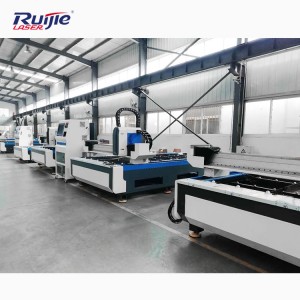How to choose a Fiber laser cutting machine?
If your company is in the manufacturing, electronics, or even medical sectors, sooner or later, you will require laser marking for your products and components. The best solution for this is a fiber laser marking machine. The non-contact fiber laser marking process is well-known among customers for the following reasons:
- Durability
- Readability
- High-temperature resistance
- Application to various materials
- No need for toxic inks, solvents, or acids
But simply understanding the advantages of fiber lasers is not enough. There are other factors that you need to consider.
Factors for Choosing a Fiber Laser Marking Machine:
The following are parameters specific to the laser source that you need to keep in mind when choosing a fiber laser marking machine.
Beam Quality:
- Beam quality is an important parameter, as it affects the laser’s processing capability. The reasons for the importance of beam quality are simple:
- A laser with better beam quality can remove material much faster, with better resolution, and improved quality.
- Laser markers with high beam quality can produce a focused optical spot size down to 20 microns or smaller.
- High beam quality lasers are particularly suited for scribing and cutting materials such as silicon, aluminum, and stainless steel.
Single or Multi-mode Lasers:
- There are two types of fiber lasers – single mode and multi-mode.
- Single mode fiber lasers deliver a narrow, high intensity beam that can be focused down to a spot size as small as 20 microns and are generated within a fiber core of less than 25 microns. This high intensity is ideal for cutting, micro machining, and fine laser marking applications.
- Multi-mode lasers (also called higher order mode), use fibers with core diameters greater than 25 microns. This results in a beam with a lower intensity and large spot size.
- Single mode lasers have the best beam quality, while multi-mode lasers allow for the processing of large components.
Mark Resolution:
- The type of fiber laser machine you choose will determine its mark resolution capabilities. The machine should be able to achieve a sufficient mark size and quality. Fiber laser marking machines generally consist of 1064nm lasers, which provide resolutions up to 18 microns.
- Along with the important characteristics of the laser source, one must also consider the full laser marking system when coming to a decision on which fiber laser marking machine will be best suited to an application:
Beam Steering:
- A laser marking system can use one of two methods for steering the laser beam to make the necessary marks.
Galvanometer:
- A Galvanometer based system for beam steering uses two mirrors that quickly oscillate to move the laser beam back and forth. This is similar to systems used for laser light shows. Depending on the focusing lens used on the system, this can provide a marking area as small as 2″ x 2″ or as large as 12″ x 12″.
- The galvanometer type system can be very fast, but generally has a longer focal length and thus a larger spot size. Also, with a galvanometer type system, it can be easier to account for contours on the part you are marking. This is achieved by including a lens on a third galvanometer to change the focal length while marking.
Gantry:
- In Gantry type systems, the beam is steered via mirrors mounted on long linear axes, similar to what you might have seen on a 3D printer. In this type of system, the linear axes can be any size and so the marking area can be configured to whatever is needed. The gantry-type systems are generally slower than the galvanometer system, since the axes have to move a much longer distance and have much more mass to move. However, with the gantry system, the focal length can be much shorter, allowing for smaller spot sizes. Generally, gantry systems are better suited for large, flat pieces such as signs or panels.
Software:
- Like any major equipment, the software used should be user friendly, with a simple user interface and all of the features needed. Most laser marking software include the capability to import images, but one should be sure that the software can handle both vector files (such as .dxf, .ai, or .eps) and raster files (such as .bmp, .png, or .jpg).
- Another important feature to check is that the laser marking software has the capability to create text, barcodes of various types, automatically changing serial numbers and date codes, simple shapes, or arrays of any of the above.
- Finally, some software includes the capability to edit vector files directly in the software itself, rather than using a separate image editor.
These basic factors can help you make an informed decision when purchasing a fiber laser marking system for your company.
And I am sure Ruijie Laser will never let you down.
Thanks for your reading, hope it can help you. ![]()
Post time: Dec-20-2018


